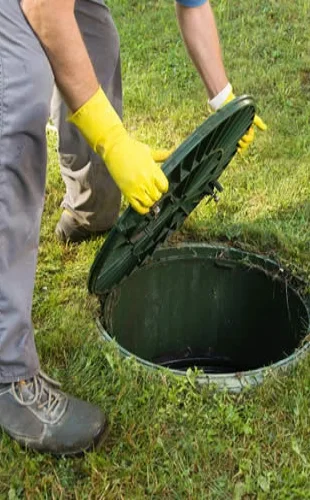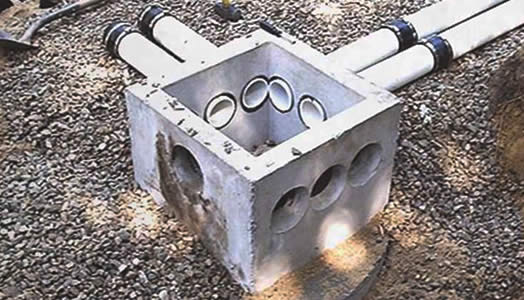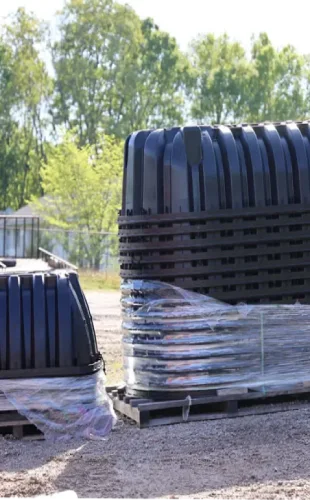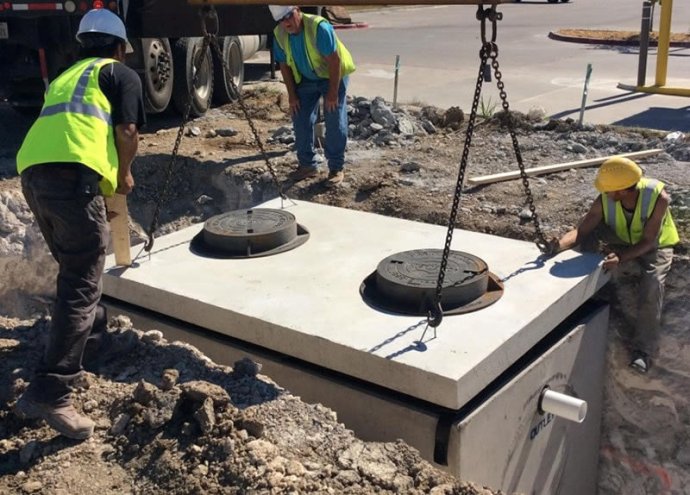If you’re looking to install a septic tank in your new home or replace an aging septic tank, it’s important to understand the advantages and disadvantages of different types of septic tank materials. Today, Garrett Precast compares the three common septic tank materials to help you make an informed decision.
Garret Precast is a trusted retaining wall supplier that offers a wide range of precast solutions. If you’re looking for high-quality concrete septic tanks, we are one phone call away.
Concrete
Concrete is one of the most popular materials used to construct septic tanks. Concrete septic tanks are known for their durability, resistance to corrosion, and ease of maintenance. As long as the tank is installed by professional septic technicians, you can expect it to last between 40 and 80 years. While the upfront cost of installing a concrete septic tank might be higher compared to plastic and fiberglass materials, it offers significant long-term savings. Their durability and ease of maintenance mean fewer repairs and less frequent replacements.
However, concrete septic tanks are prone to cracking if not installed properly. A concrete septic tank is a good choice when you want a durable septic tank that can withstand heavy loads. If you’re looking for a trusted concrete septic tank supplier, contact Garrett Precast. We take great pride in offering reliable precast solutions, including retaining walls, septic tanks, septic tank risers, seawalls, and many more.
Fiberglass
If you’re looking for a less expensive septic tank material, you’ll want to choose fiberglass. This material weighs less than concrete and is impervious to rusting and cracking. Fiberglass septic tanks are easier to install because they are lightweight and can be moved into place with minimal equipment. The material is resistant to corrosion, meaning it will last longer and require less maintenance compared to other materials.
However, fiberglass septic tanks come with their fair share of downsides. This material is more susceptible to damage during installation and transportation and may require more frequent inspections. Fiberglass is a good choice if you’re looking for a material that is less expensive to purchase and install than concrete tanks. If you have a high water table, fiberglass tanks may be a good option due to their resistance to water damage. It’s also important to consider local regulations when you arechoosing a septic tank material. Ensure that fiberglass tanks are permitted in your area.
Fiberglass septic tanks are not recommended for areas with extreme temperature fluctuations and heavy loads. A concrete tank might be a more suitable choice due to its superior strength.
Plastic
Plastic septic tanks are recognized for their lightweight nature, corrosion resistance, and ease of installation. This makes them a practical choice for remote or difficult-to-access locations. These tanks are particularly advantageouswhen dealing with challenging soil conditions or limited space. However, they are less durable than concrete or fiberglass and can be more susceptible to damage from UV radiation and extreme temperatures.
Some of the key factors to consider when choosing a septic tank material include soil conditions, local regulations, and longevity. It’s always advisable to consult with a septic tank professional to determine the best material for your needs.
The Go-To Company for Precast Products
Looking for quality concrete septic tanks? Get in touch with Garrett Precast today. We are a professional company specializing in manufacturing a wide range of precast concrete products, including septic tank lids.
















